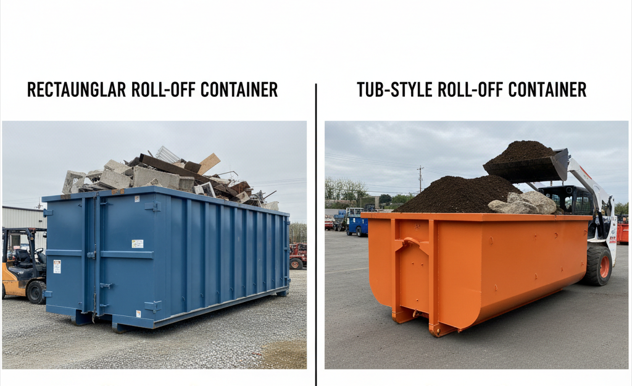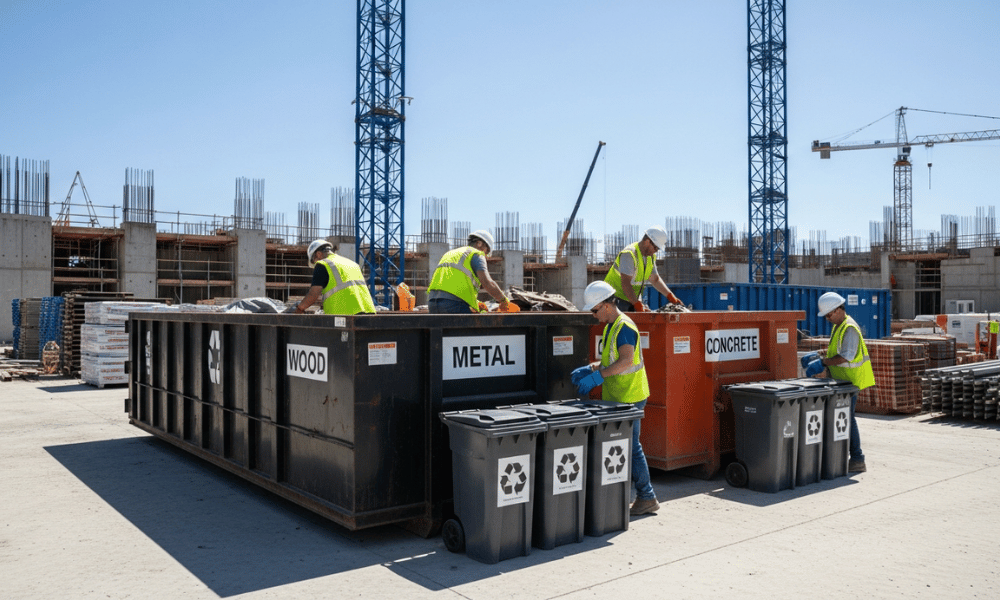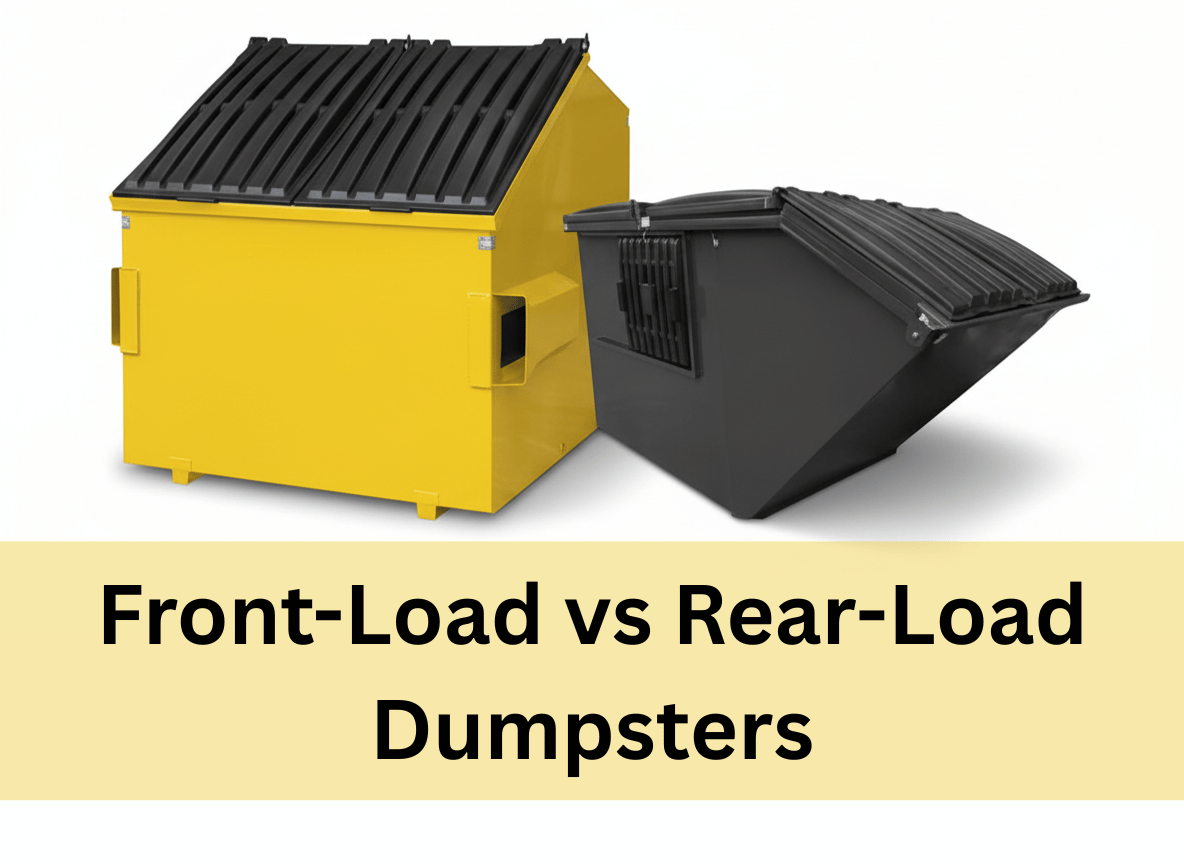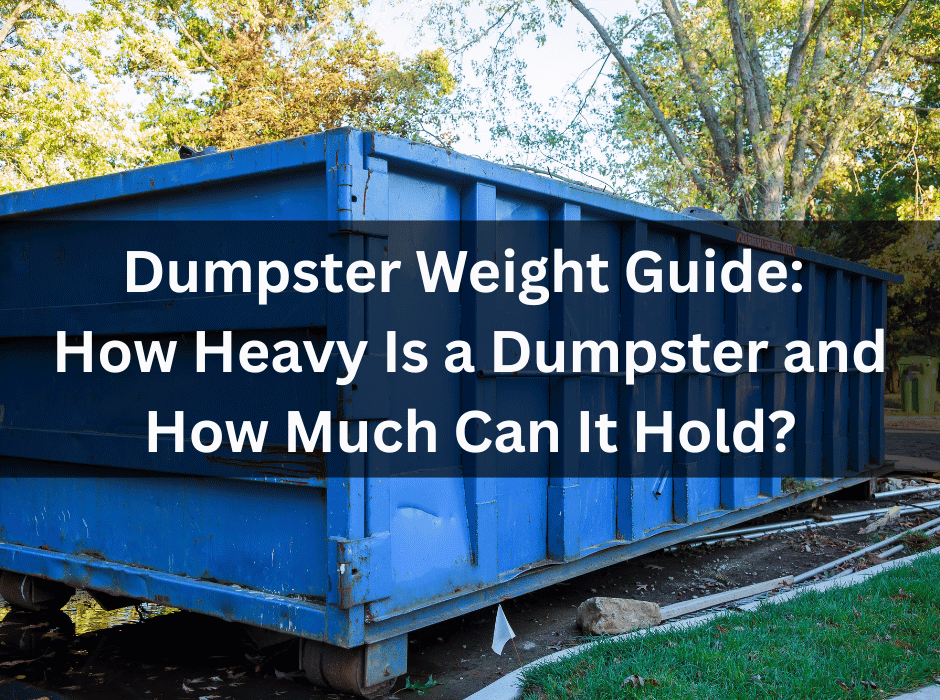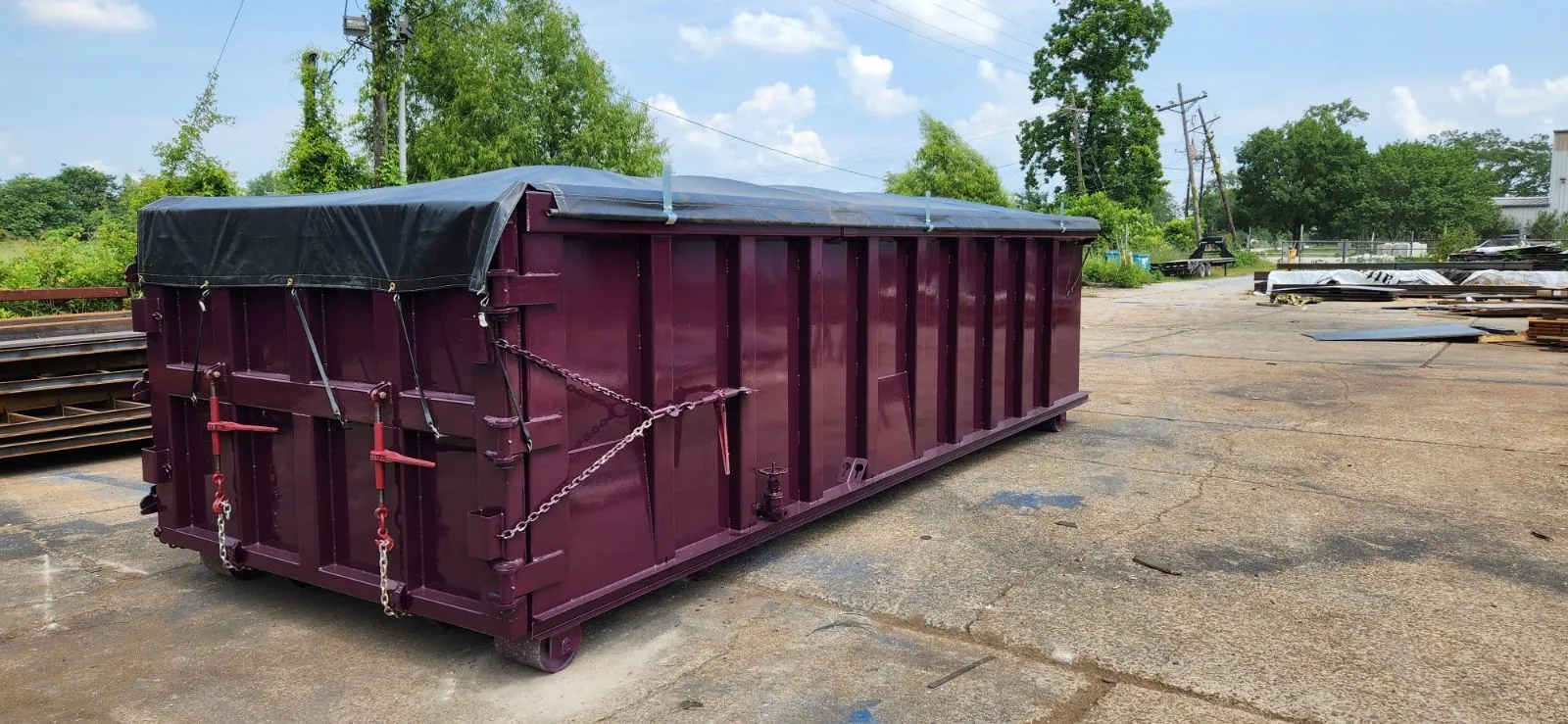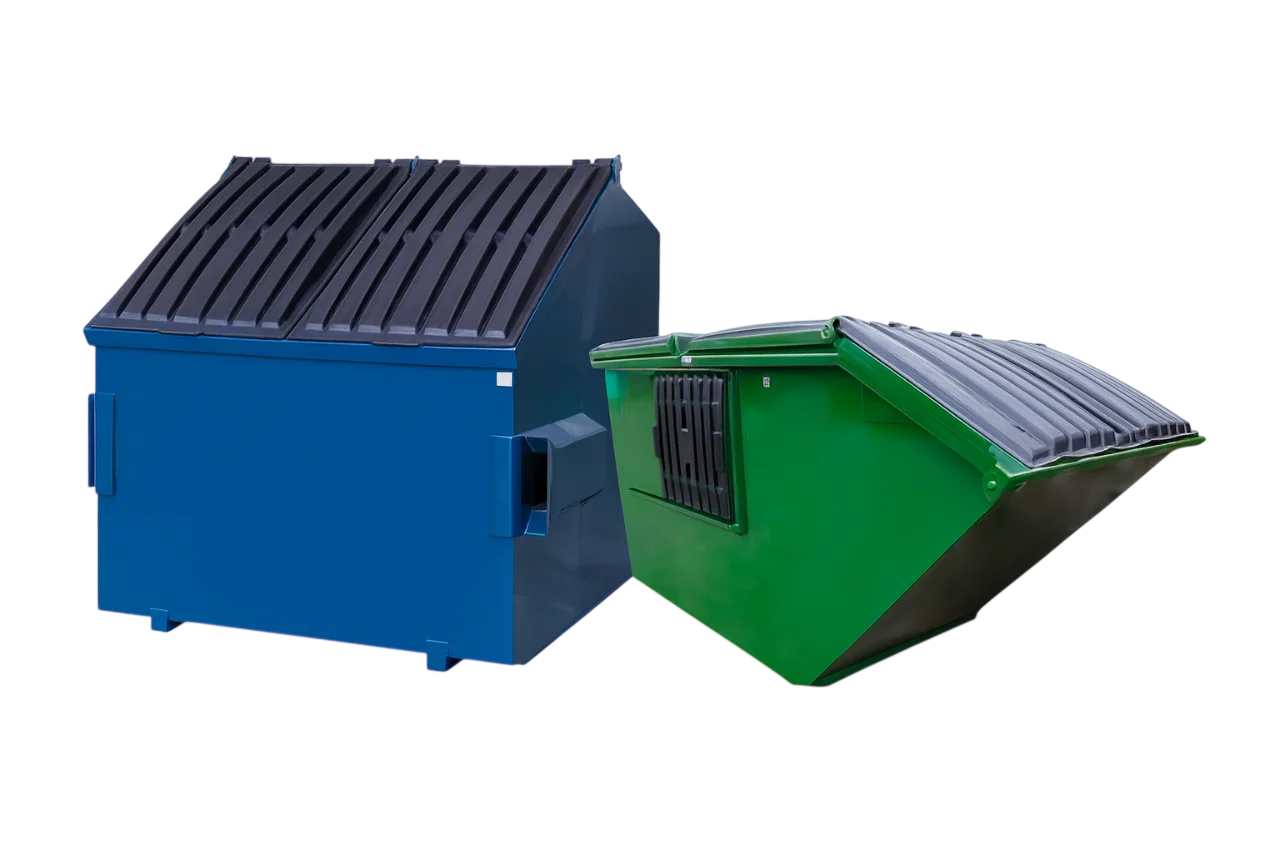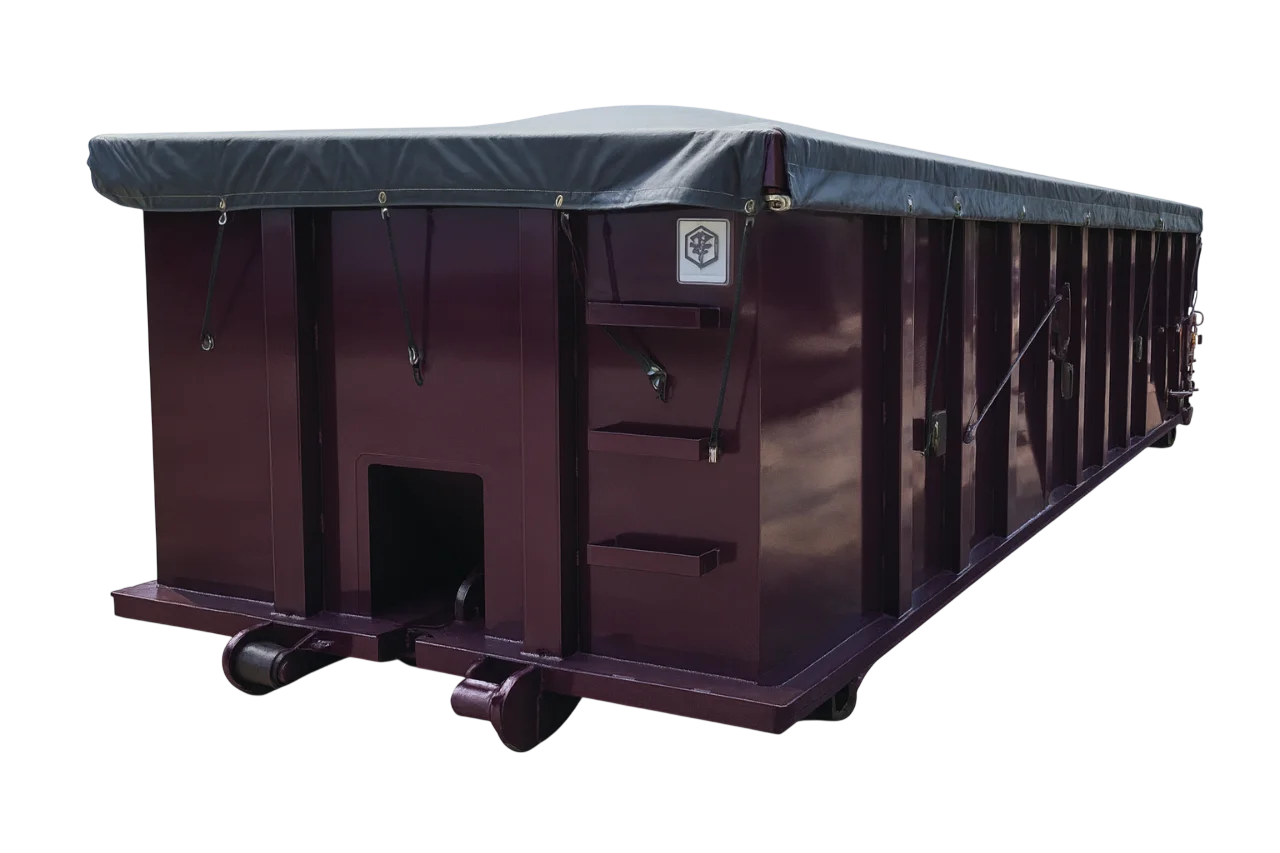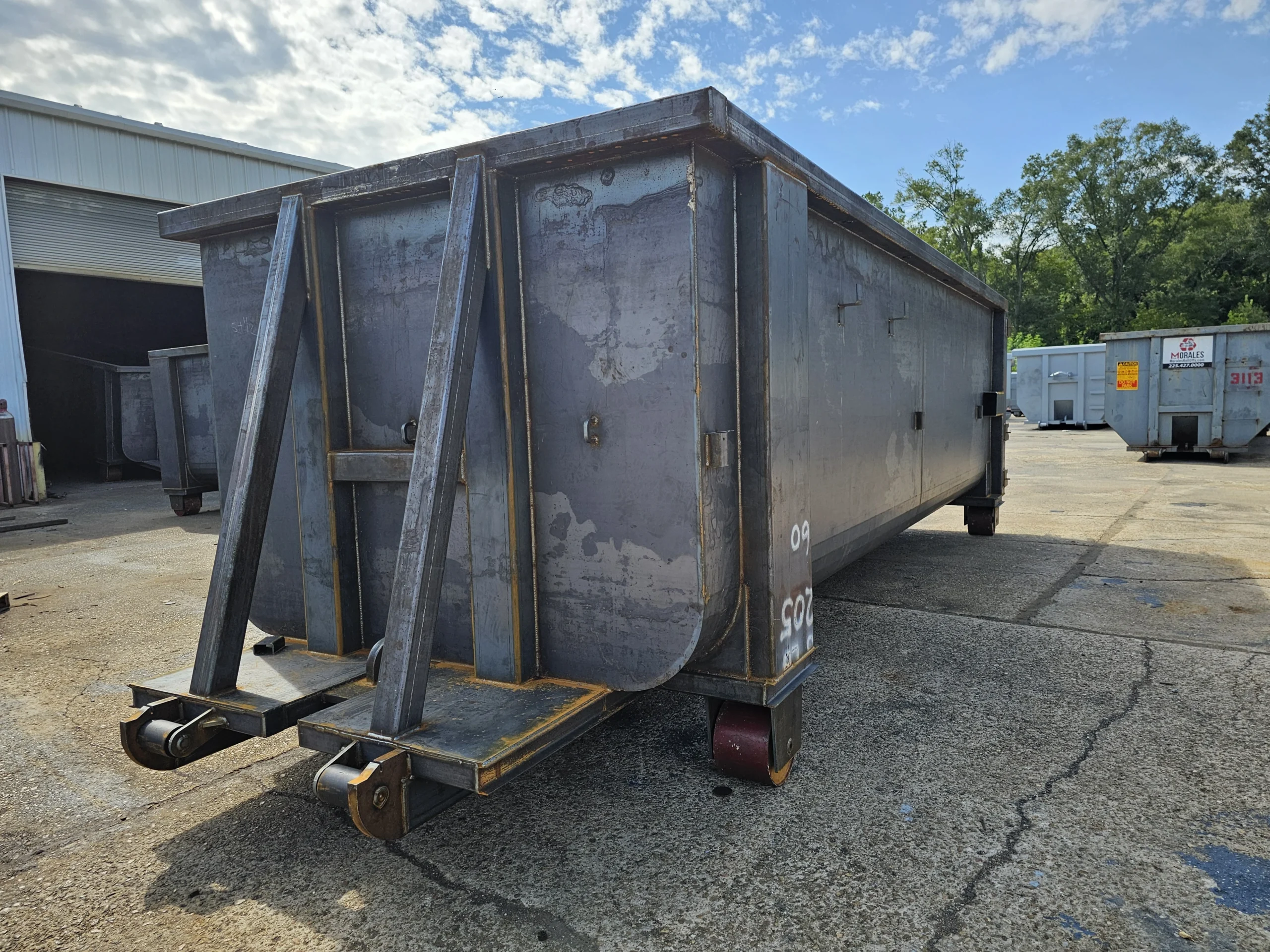When it comes to waste hauling, rectangular and tub-style (or “bathtub”) roll-off containers differ mainly in their shape and ideal use. Rectangular containers have flat bottoms and straight, vertical walls, making them very sturdy for heavy, dense materials. In contrast, tub-style containers have sloped or curved bottoms and sides, resembling a giant bathtub, so debris easily slides out. In plain terms, rectangular bins are built for weight and bulk, while tub-style bins are built for easy dumping. This means rectangles are best for tough construction debris, whereas tubs shine with loose, lighter waste. The choice comes down to your project’s needs – weight and type of waste, space, and unloading ease – as we’ll explain below.
Rectangular Roll-Off Containers

Rectangular roll-off containers look like big metal boxes. They have flat, level floors and vertical walls, usually made from heavy-duty steel. This straight-sided design maximizes volume – you get more internal space for bulky loads like concrete, brick, or roofing shingles. To handle these heavy loads, rectangular bins often have reinforcing ribs or supports along the sides. These extra ribs and thick steel walls make them very strong, but they also add weight. As a result, rectangular containers are commonly used in large construction and industrial jobs (for example, demolition debris or dense scrap).
However, the boxy shape has a trade-off. Because the floor is flat and corners are sharp, debris can get stuck. Heavy material tends to settle in the corners or along the sides and may require manual shoveling or extra effort to unload completely. This is especially true if the waste is wet or sticky – nothing slides out on its own. In practice, crews often have to “dig out” the corners of a rectangular bin when emptying it.
- Flat, boxy shape: Straight sides and flat bottom give maximum space and stability.
- Heavy-duty build: Made of thick steel with ribs/supports for durability.
- Best for tough debris: Ideal for dense construction waste (concrete, metal, bricks).
- Unloading drawback: Waste can lodge in corners, so extra labor may be needed to clean it out.
Tub-Style (Bathtub) Roll-Off Containers


Tub-style containers (often called “bathtub” dumpsters) look quite different. They have curved, tapered sides and a sloped bottom, much like a bathtub on wheels. This smooth shape serves an important purpose: as you raise the container to dump it, gravity helps the waste slide out of the curved bottom. In other words, debris doesn’t get hung up in the corners – it naturally moves toward the center and empties cleanly. This makes tub-style bins very easy to unload, reducing manual labor.
Because of this design, tub containers usually omit heavy side ribs. The sides are smooth and often a little shorter at the base, which means less steel and overall lighter weight. That lighter construction also makes them cheaper to build and buy. In practice, tub-style roll-offs are commonly used for lighter, looser materials – for example, dirt, mulch, green waste, roofing shingles, or demolition debris that isn’t extremely dense. You’ll often see them on landscaping jobs or home clean-ups.
- Bathtub shape: Curved, sloping bottom ensures materials slide out easily.
- Smooth, rib-less walls: Fewer internal supports make them lighter and often less expensive.
- Great for loose waste: Perfect for dirt, wood, yard debris, and recyclable materials.
- Stackable & sleek: Tub units can nest inside each other for transport, and their smooth sides are ideal for company logos or labels.
Key Comparison Points
- Shape & Unloading: Rectangular bins are box-shaped (flat bottom) and can trap debris; tub-style bins are curved (like a bathtub) so waste slides out.
- Capacity: Rectangular containers usually offer slightly more total volume because of their straight sides, which is good for large uniform loads. Tub-style may hold a bit less volume but are easier to empty fully.
- Strength: Rectangular bins use more steel and support braces, making them better for really heavy loads. Tub bins are lighter duty (though still robust) and suit lighter or loose materials.
- Transport & Storage: Tub-style can be nested – multiple empty tubs can be stacked together, saving shipping costs. Rectangles cannot be nested (only 2 per truck load).
- Applications: Rectangular is common in heavy construction and industrial projects (especially in the Northeast US). Tub-style is often seen in landscaping, renovations, and recycling (especially in the South/Southwest US).
- Branding & Visibility: Smooth sides on tub containers make them ideal for decals and signage (good for companies). Rectangular bins with ribbing are harder to brand but very functional.
Choosing the Right Container
Which style you need depends on what you’re throwing away and how you’ll use it. For heavy, bulky debris (think concrete blocks, brick, scrap metal, or heavy stone), a rectangular roll-off is usually best because of its extra strength and capacity. Contractors doing big demolitions often prefer rectangles. But if your debris is lighter or loose – such as yard waste, soil, shingles, or mixed renovation junk – a tub-style dumpster can save you hassle. Its sloped floor means less stuck material and easier dumping.
Consider your site layout too. If you have limited space or narrow access, the tub’s ability to empty more cleanly and stack empty units can be very helpful. Homeowners and small contractors often choose tubs for this reason. On the other hand, if you’re hauling a lot of weight, it’s safer to use a container built for it; overloading a tub-style could overload the container. Always match the container size and style to your project’s volume and weight limits.
